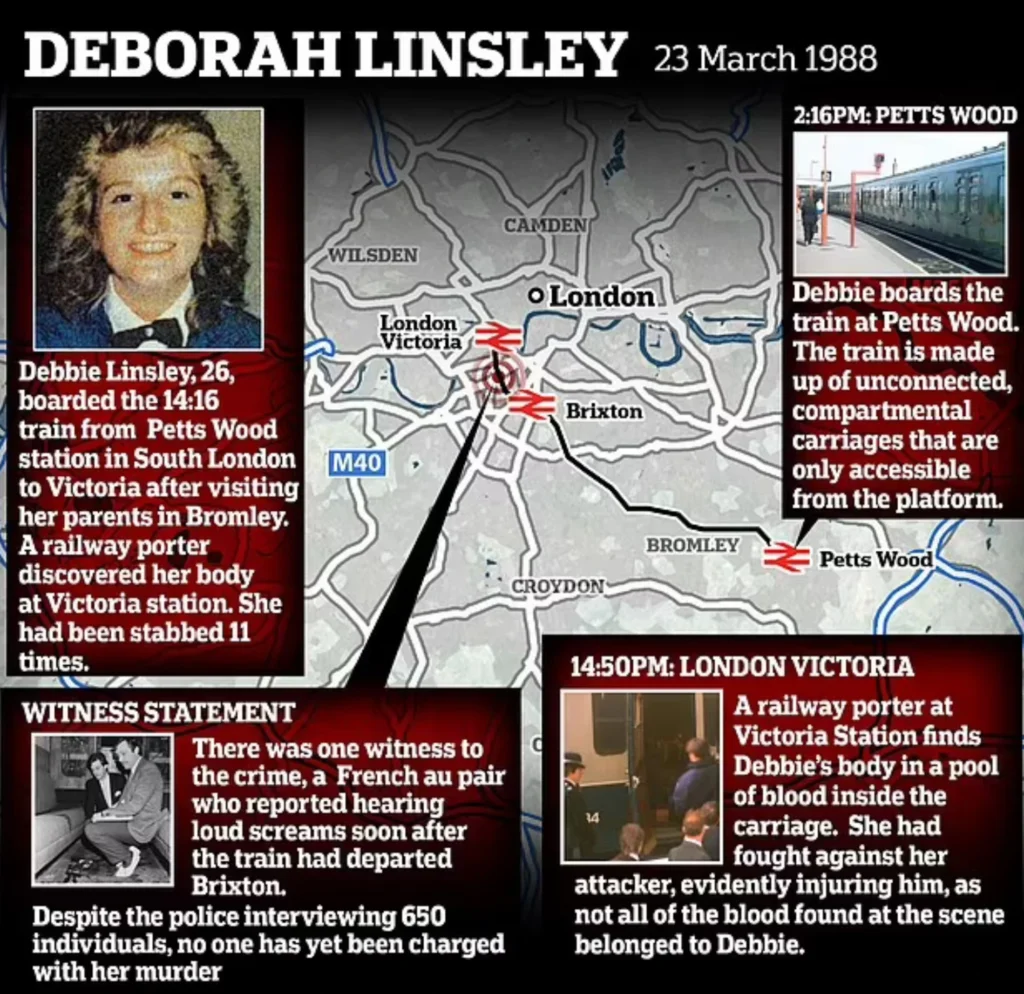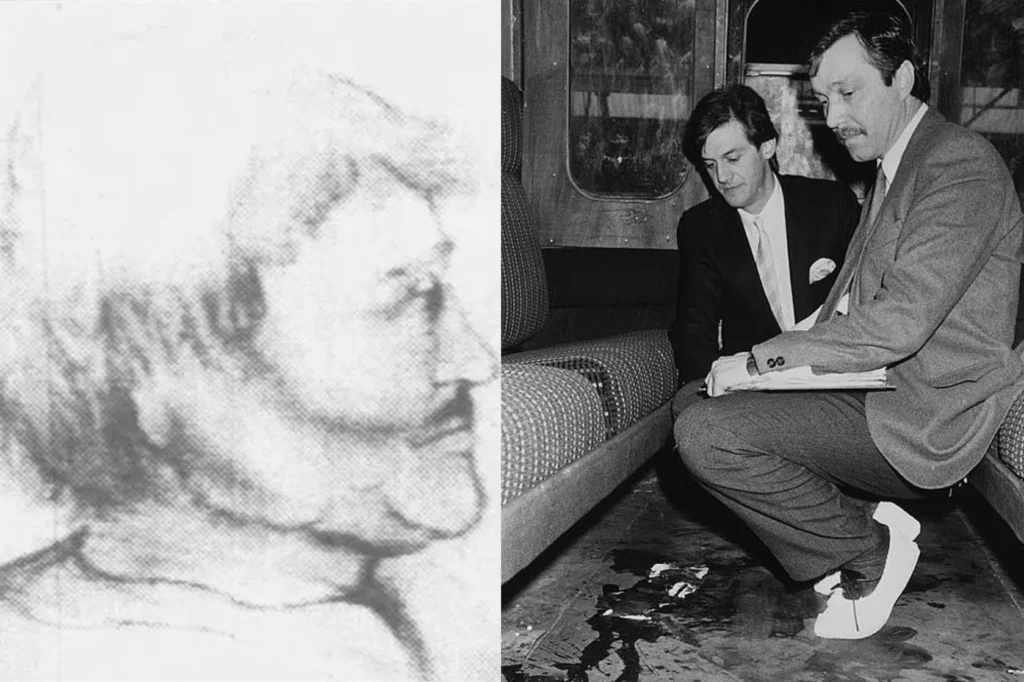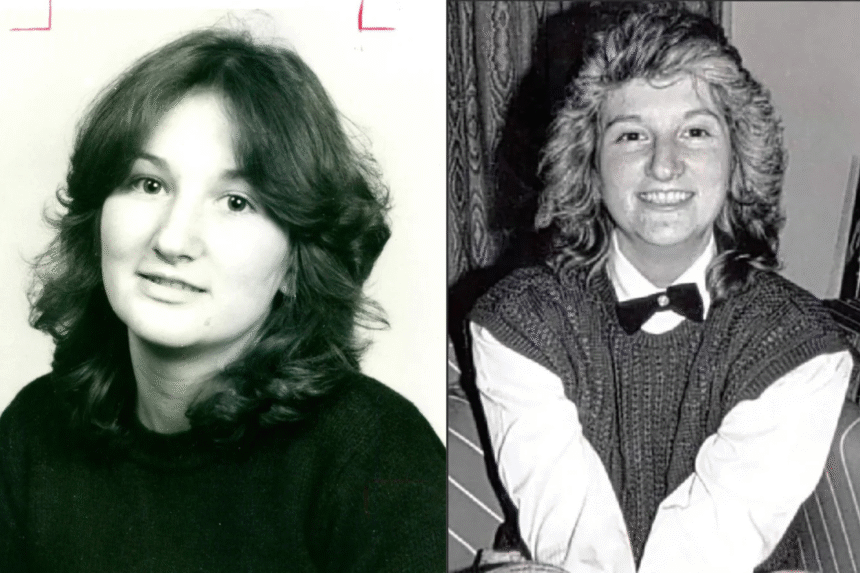On March 23, 1988, the ordinary hum of a commuter train carried with it an unthinkable horror. Somewhere between Petts Wood and London Victoria, 26-year-old Deborah Ann Linsley was brutally murdered inside a second-class train compartment. Nearly seventy passengers were on board, yet no one saw the killing unfold.
The attack shocked Britain, not only for its savagery but for its setting—daylight hours, in public space with commuters sitting only steps away.
A Promising Life Cut Short
Deborah—known to friends and family simply as Debbie—was born on October 20, 1961, in Bromley, Kent. She grew up in a close-knit household with her parents, Arthur and Marguerite Linsley and her younger brother, Gordon.
Her father, a retired insurance broker and her mother, who worked in fraud investigations for the Department of Social Security, encouraged their daughter’s sense of ambition. Friends recalled her as intelligent, driven and kind. By her mid-20s, she had carved out a career as a hotel manager in Edinburgh, Scotland, a role that showed both her people skills and her leadership qualities.
In March 1988, Deborah returned home to Bromley for a short visit. She was preparing for an upcoming management course and, more importantly, her brother’s wedding, according to the BBC. Gordon later recalled how much she had thrown herself into helping with preparations. She was set to stand by his side as a bridesmaid, a role that made her death feel even more unbearably cruel.
A Frenzied Attack

That Wednesday afternoon, Gordon drove his sister to Petts Wood station. Deborah boarded the 2:16 p.m. Orpington-to-London Victoria service. The train was scheduled to make several stops along the way—Bickley, Bromley South, Beckenham Junction, and Brixton among them—before arriving at its final destination at 2:50 p.m.
Deborah chose carriage 15084, a second-class compartment coach. These types of carriages, once common on British trains, were designed with separate compartments accessed only through side doors. There was no connecting corridor, meaning once inside, passengers were cut off from others except through the windows. For some, the design meant peace and privacy. For Deborah, it created a deadly trap.
At some point during the half-hour journey, Deborah was cornered and stabbed repeatedly by an unknown man. Investigators later revealed that she sustained at least eleven wounds—to her face, abdomen and chest. Five were aimed at her heart.
Blood evidence at the scene showed she fought back hard. Police believed she may have injured her attacker in the struggle, leaving traces of his blood behind. The murder weapon, thought to be a heavy-bladed knife between five and seven inches, was never recovered.
When the train rolled into London Victoria at 2:50, a porter entered the carriage and made a grim discovery. Deborah lay on the floor and seat in a pool of blood. Superintendent Guy Mills, who led the investigation, later described the crime as “savage and brutal,” noting that she had no real escape except through the doors and onto the track.
The Hunt for the Killer

Despite the crowded train, remarkably little was observed. The only person to report hearing anything significant was a French au pair traveling nearby. She told the inquest that shortly after the train left Brixton, she heard “loud screams” so disturbing she believed “someone was being raped.” Yet she admitted she froze in fear and didn’t pull the emergency cord, The Guardian reports.
The coroner publicly criticized her and other passengers for failing to act.
From the beginning, police treated the case with urgency. Deborah’s murder was featured on Crimewatch UK, generating widespread attention. Detectives interviewed more than 650 people and collected around 1,200 witness statements.
Several men drew attention during the investigation. One was described as a “short, stocky man” seen leaping off the train at Victoria. Another was a “scruffy man with dirty blond hair” who got off at Penge East; police even circulated an artist’s sketch of him. A third was a man spotted loitering at Orpington station, staring at female passengers.
Yet none of these leads ever panned out. Superintendent Mills told reporters at the time that, given the level of violence, “it was unlikely to have been the killer’s first.” Detectives believed the attacker might have been a repeat violent offender who slipped back into anonymity.
A Railway Under Scrutiny
The murder shone a harsh spotlight on the very design of Britain’s train system. Compartment-style carriages, once considered comfortable, now looked dangerous. Without corridors, passengers were cut off from help if trouble arose.
In the aftermath, British Rail accelerated its plans to phase them out. Some trains were marked with bold red stripes to signal their design and guards were ordered to patrol more frequently. Police advised commuters—particularly women—not to ride in isolated compartments where the only exit was onto the tracks.
Deborah’s death devastated her family. Her funeral, held on April 22, 1988, at Holy Trinity Church in Bromley, drew heavy police presence. Her coffin was carried by officers, with the bridesmaid dress she would have worn at Gordon’s wedding placed inside. It was a heart-wrenching symbol of a future stolen.
Her parents and brother refused to let her case fade from memory. Over the years, they issued repeated appeals for information. “There must be a partner, relative, or friend out there who knows of someone who returned home with an unexplained injury,” her father, Arthur, said in 2018. “We only need one phone call if it is the right one.”
Forensics and DNA Advances

In 1988, DNA science was still in its infancy. The samples collected at the crime scene could not yet be fully analyzed. But as forensic technology advanced, so did hope.
By the early 2000s, scientists were able to build a complete DNA profile from the attacker’s blood. Police reopened the case in 2002, staging a fresh appeal and reconstructing the crime for national television, per ITVX.
Detectives scoured databases and cross-checked suspects but the DNA did not match anyone on file. The breakthrough that once seemed so close remained out of reach.
A decade later, in 2013, the Metropolitan Police renewed their efforts. They reissued appeals, offered a £20,000 reward and once again pushed the case into the spotlight. Detective Inspector Susan Stansfield assured the public: “We will do everything in our power to identify the killer and bring them to justice. We have a DNA profile of the suspect and this remains a key piece of evidence that we are following up on.”
Questions Without Answers
Even with modern science, the mystery endures. Who boarded carriage 15084 with Deborah that day? Was the attacker a stranger, or someone she might have recognized? Did fellow passengers notice a man leaving the train bloodied or agitated?
Police continue to believe that someone—somewhere—has the missing piece. Perhaps it is a memory of a relative returning home with injuries, or a long-held suspicion never spoken aloud. “Although this happened 30 years ago,” a Metropolitan Police spokesperson said, “you may recall being on that train or at a station on the route and seeing something which at the time you thought nothing of but in light of what happened was out of place and suspicious.”
More than three decades later, the murder of Deborah Linsley remains unsolved. For her family, each year brings both her absence and the lack of closure.
Her story endures not only as a tragic loss of a young woman’s promising life but as one of Britain’s most enduring unsolved crimes—an open case that still waits for one answer, one tip, one phone call that could finally name the man who stepped into her compartment and never faced justice.




